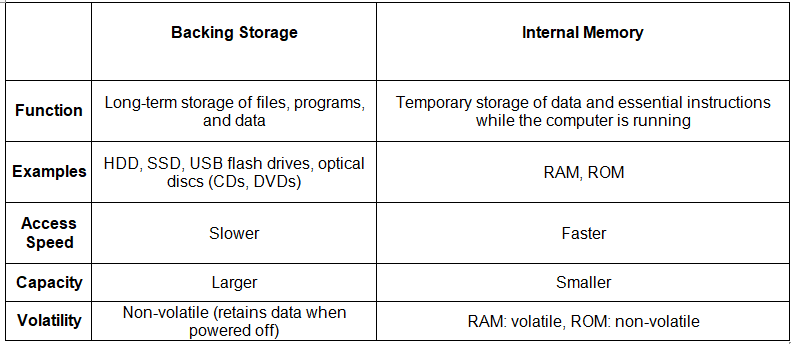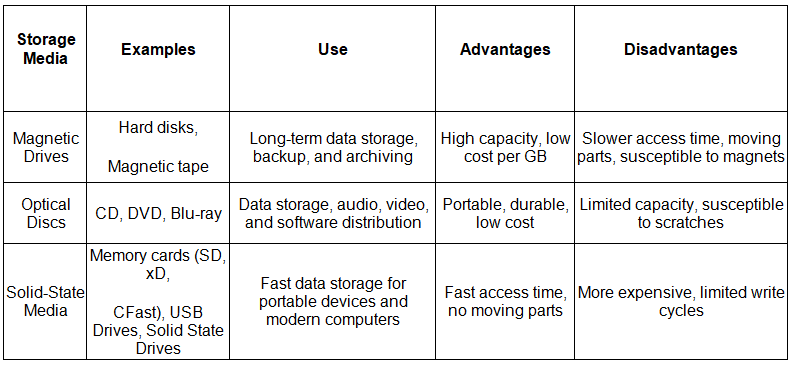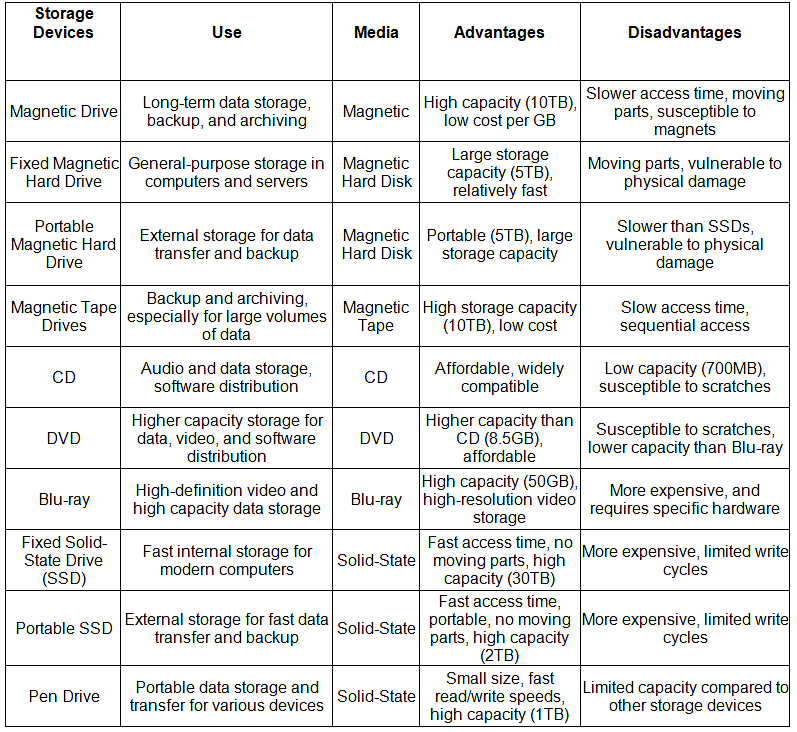Storage | IGCSE Information and Communication Technology Preparation - Year 11 PDF Download
| Table of contents |

|
| Characteristics of Backing Storage |

|
| Differences between Backing Storage & Internal Memory |

|
| Storage Media |

|
| Storage Devices |

|
Characteristics of Backing Storage
- Backing storage: Long-term storage used for data, files, and programs when not in use
- Examples of backing storage include:
- Hard disk drives (HDD)
- Solid-state drives (SSD)
- USB flash drives
- Optical discs (CDs, DVDs)
- Backing storage is slower than internal memory but has higher capacity
- It is non-volatile, meaning data is retained when the computer is powered off
Differences between Backing Storage & Internal Memory

Storage Media

Storage Devices

The document Storage | IGCSE Information and Communication Technology Preparation - Year 11 is a part of the Year 11 Course IGCSE Information and Communication Technology Preparation.
All you need of Year 11 at this link: Year 11
FAQs on Storage - IGCSE Information and Communication Technology Preparation - Year 11
| 1. What are the characteristics of backing storage? |  |
Ans. Backing storage refers to storage devices that store data for long-term use, such as hard drives, solid-state drives, and optical discs. These devices have larger storage capacities compared to internal memory and are non-volatile, meaning they retain data even when the power is turned off.
| 2. How do backing storage and internal memory differ from each other? |  |
Ans. Backing storage is used for long-term storage of data, while internal memory (RAM) is used for short-term storage of data that the computer is currently using. Backing storage has larger capacities and is non-volatile, whereas internal memory is volatile and loses data when the power is turned off.
| 3. What are some common storage media used in backing storage devices? |  |
Ans. Common storage media used in backing storage devices include hard drives, solid-state drives, magnetic tapes, and optical discs such as CDs, DVDs, and Blu-ray discs.
| 4. What are some examples of backing storage devices commonly used in computers? |  |
Ans. Some examples of backing storage devices commonly used in computers include hard disk drives (HDDs), solid-state drives (SSDs), USB flash drives, and external hard drives.
| 5. How has backing storage evolved over the years to meet the increasing storage demands of users? |  |
Ans. Backing storage has evolved significantly over the years, with advancements in technology leading to higher storage capacities, faster data transfer speeds, and smaller form factors. This evolution has allowed users to store larger amounts of data more efficiently and conveniently.
Related Searches



















